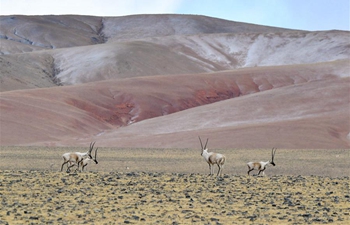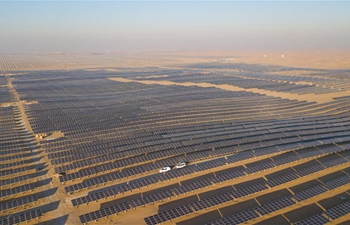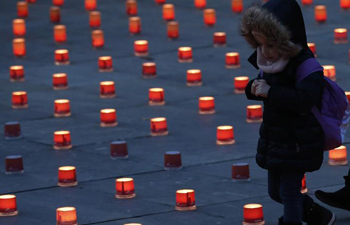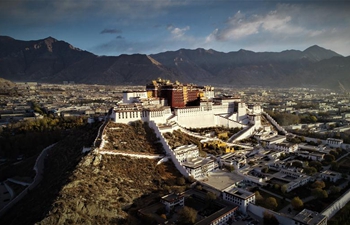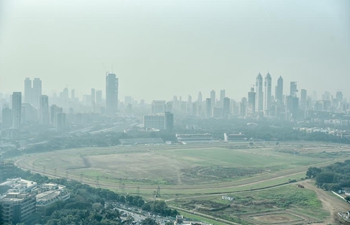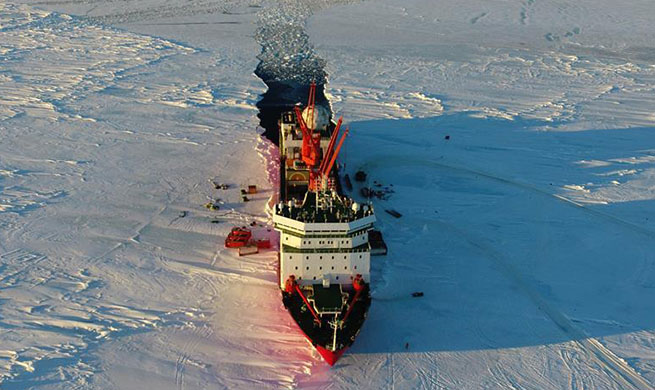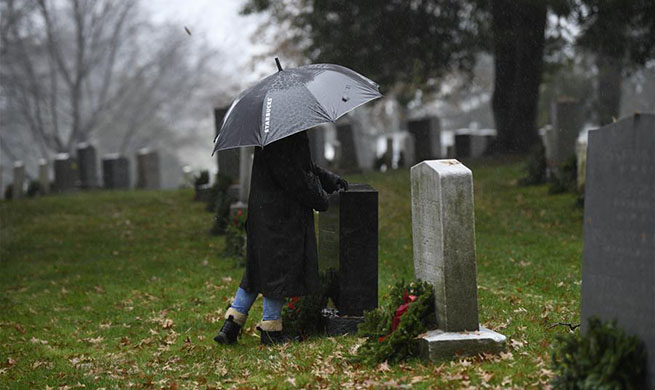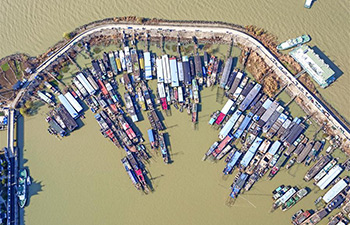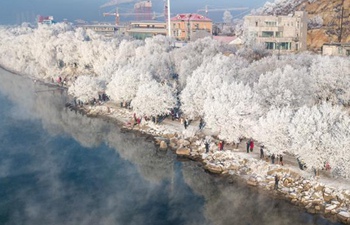by Peter Mertz
LOS ANGELES, Dec. 15 (Xinhua) -- The Camp Fire in Northern California has been under control, but the fire season is not over with experts warning of a possible repeat of the record-shattering infernos that engulfed U.S. parched Golden State this year.
"Global warming has created this tinderbox ... and it's not going away," said San Francisco businessman Glenn Nemhauser.
"I came outside ... and the flames were licking the sky and trying to jump the highway across from my house," Nemhauser said Thursday when recounting to Xinhua about his narrow escape from the harrowing wildfire sweeping his neighborhood.
Officials are praying that with the holiday season coming, California will not be afflicted with any more flames.
WORST EVER
In mid-July, 2018, a series of large wildfires erupted across California, mostly in the northern part, including the Mendocino Complex fire.
On Aug. 4, a national disaster was declared in Northern California due to the extensive wildfires.
"But the season went from bad to unbelievable in just the past 60 days, the late fall," San Luis Obispo businessman John Ott said.
In November, the Woolsey Fire in Los Angeles - Ventura gobbled up close to 100,000 acres (404.7 square km) and damaged or destroyed 2,000 structures.
Also in November, the Camp Fire starting Nov. 8 became the deadliest and most costly in Californian history.
Before it was extinguished a month later, 88 civilians were dead, 13,972 residences, 528 commercial and 4,293 other buildings were damaged and 153,336 acres (620.5 square km) were torched.
It was also the deadliest wildfire in the United States since the Cloquet Fire in 1918, data show.
"Paradise, California looked like an atomic bomb had exploded there," Nemhauser recalled, lamenting the once bucolic Northern California town levelled by the Camp Fire.
After 17 days, the Camp Fire was "contained," but not before causing close to 10 billion U.S. dollars in damage, according to insurance estimates.
As of December 2018, more than 100 lives have been lost and 2 million acres (899,676 square km) of land burnt throughout the entire fire season, according to the California Department of Forestry and Fire Protection.
The National Interagency Fire Center (NIFC) recorded a lugubrious loss of 3.5 billion U.S. dollars from the wildfire.
GLOBAL HEAT
The science community were unanimous about the link between global warming and California's infernos, as opposed to U.S. President Donald Trump's disbelieving remarks last week.
NIFC data shows that a direct contributor to the 2018 California wildfires was an increase in dead tree fuel -- by December 2017, there were a record 129 million dead trees in California.
Dan Cayan, a researcher at the Scripps Institution of Oceanography and a coordinating lead author of a November California report also warned that "more extreme weather events may well be on their way" due to "climate change".
Cayan told the Voice of America that El Nino -- periodic warming of equatorial oceans that lead to storms in the Pacific -- are not ebbing away.
"Temperatures in the Western U.S. are expected to increase by 2.4 to 6.5 degrees Fahrenheit by mid-century. The size of the area burned each year, the number of wildfires and the length of the wildfire season is also growing," said a review published by Allianz Global Corporate.
In the 1970s, the average length of the wildfire season was five months, but lasts more than seven today, according to the report."
The scale of these fires has increased to the degree that the fires themselves are now contributing to the rise in greenhouse gas emissions," it added.
BLAME
"There is no reason for these massive, deadly and costly forest fires in California except that forest management is so poor," Trump tweeted last month.
These words sparked an angry rebuttal from California Fire Professional Firefighters' president Brian Rice.
"The president's message attacking California and threatening to withhold aid to the victims of the cataclysmic fires is ill-informed, ill-timed and demeaning to those who are suffering as well as the men and women on the front lines," he said in a statement.
Nearly "60 percent of California forests are under federal management ... it is the federal government that has chosen to divert resources away from forest management, not California," he added.
Trump's previous claim that California's water policy had limited water to battle wildfires had also been refuted by wildfire and water experts.
Calling it an "ignorant drivel," Ott said that the president is clueless about the facts, but just "throwing blame on Democrats."
"Absolutely shameful to exploit this tragedy -- with fires still burning -- to try to score cheap political points," said Evan Westrup, spokesman for California Governor Jerry Brown in a statement.
To prevent communities from future fire disasters, a California Fire Plan was finalized by the state authorities during the summer as a roadmap for risk reduction. It marks a joint effort between the state and the Californian departments.
According to an official statement, the plan "looks to reduce firefighting costs and property losses, increase firefighter safety and to contribute to ecosystem..." Enditem
